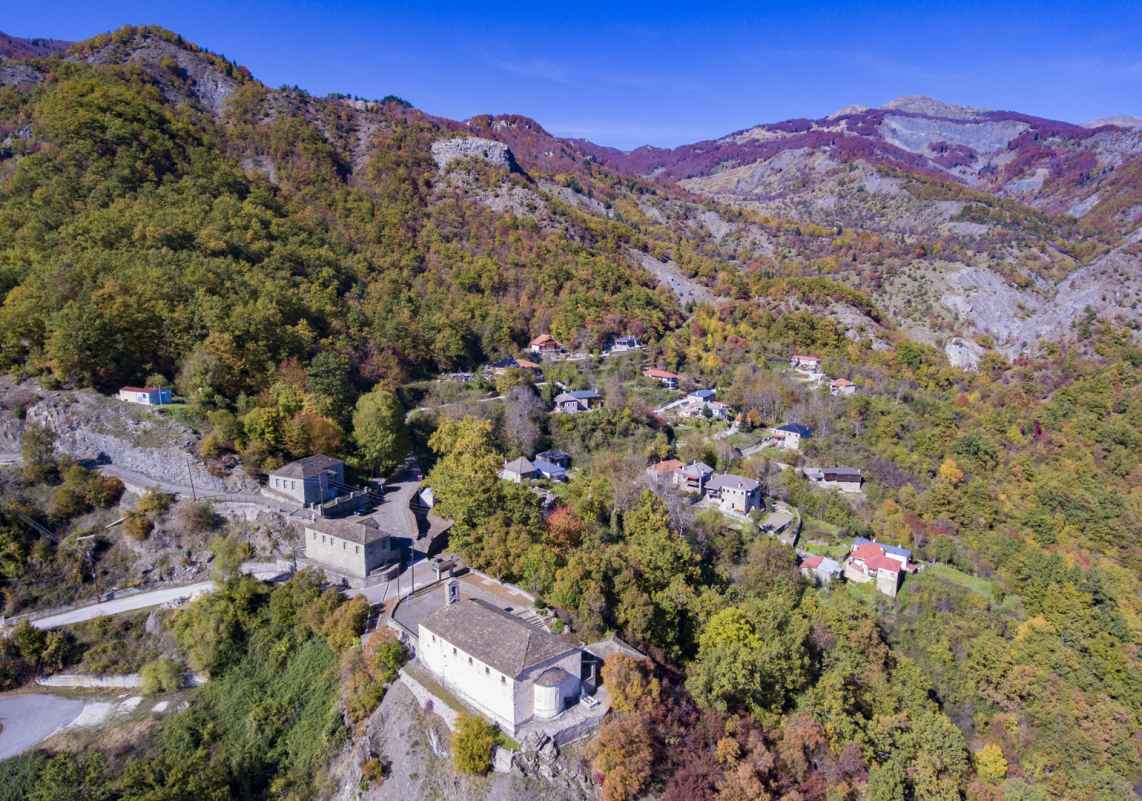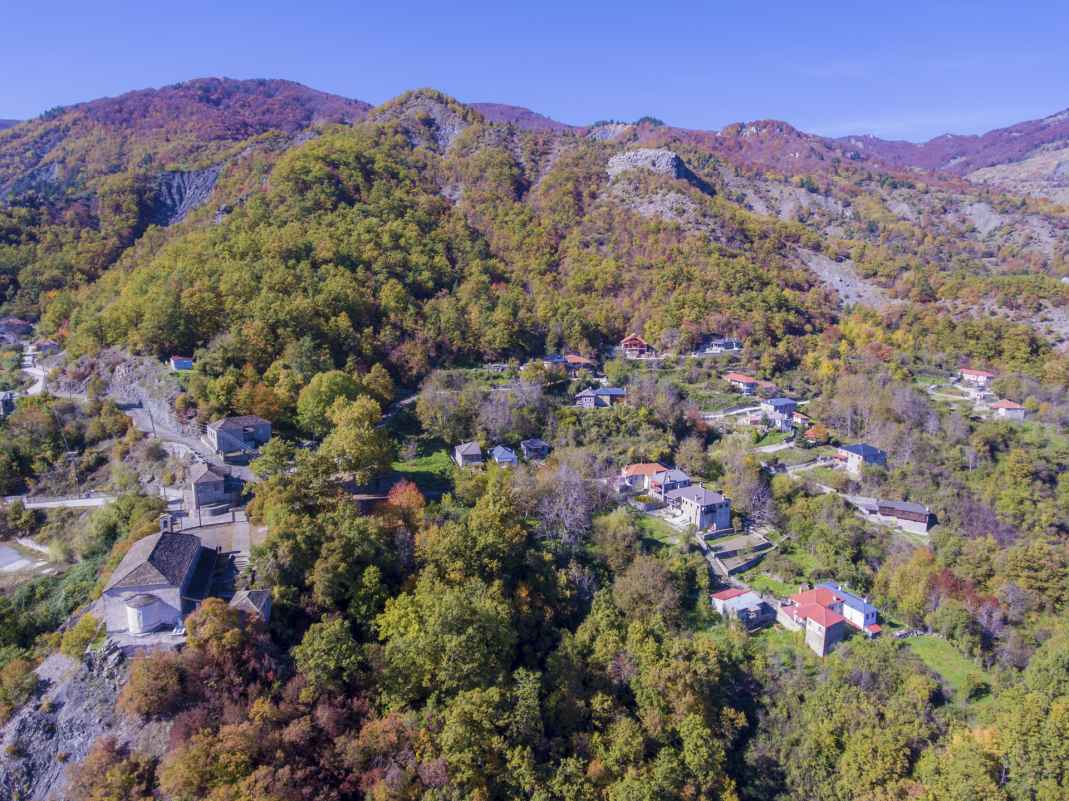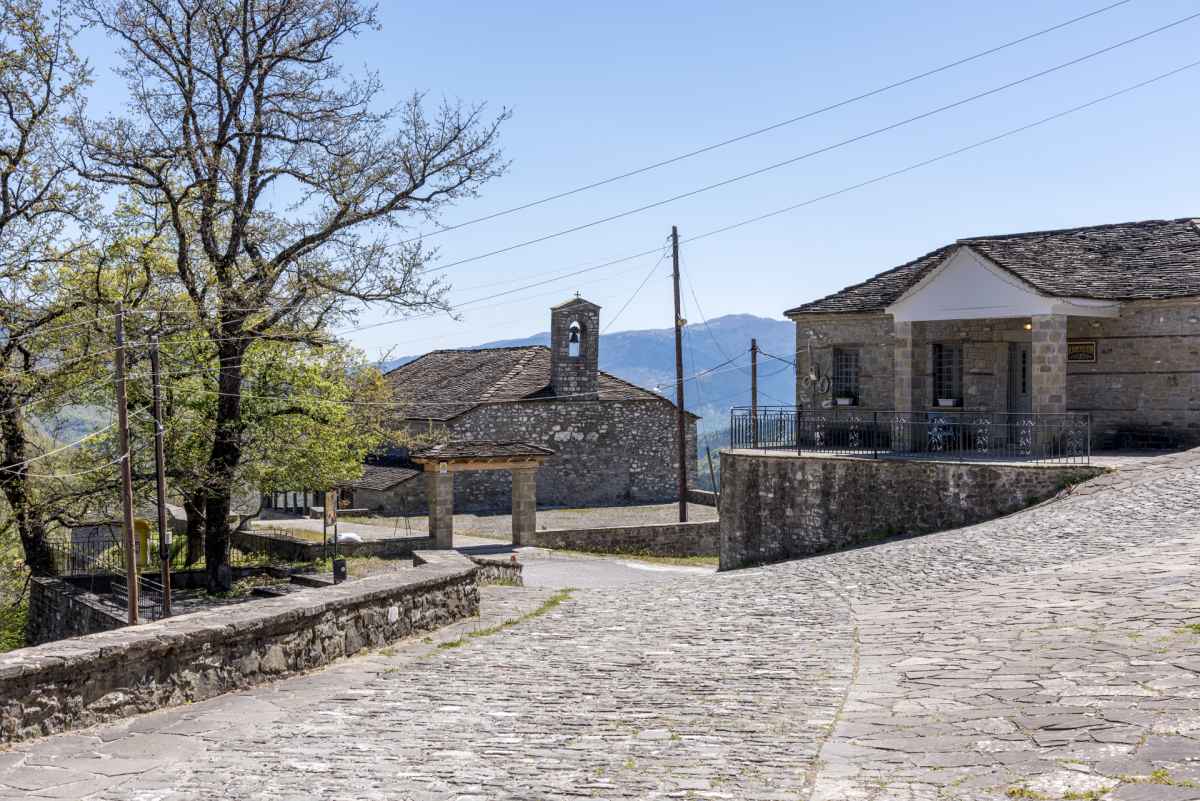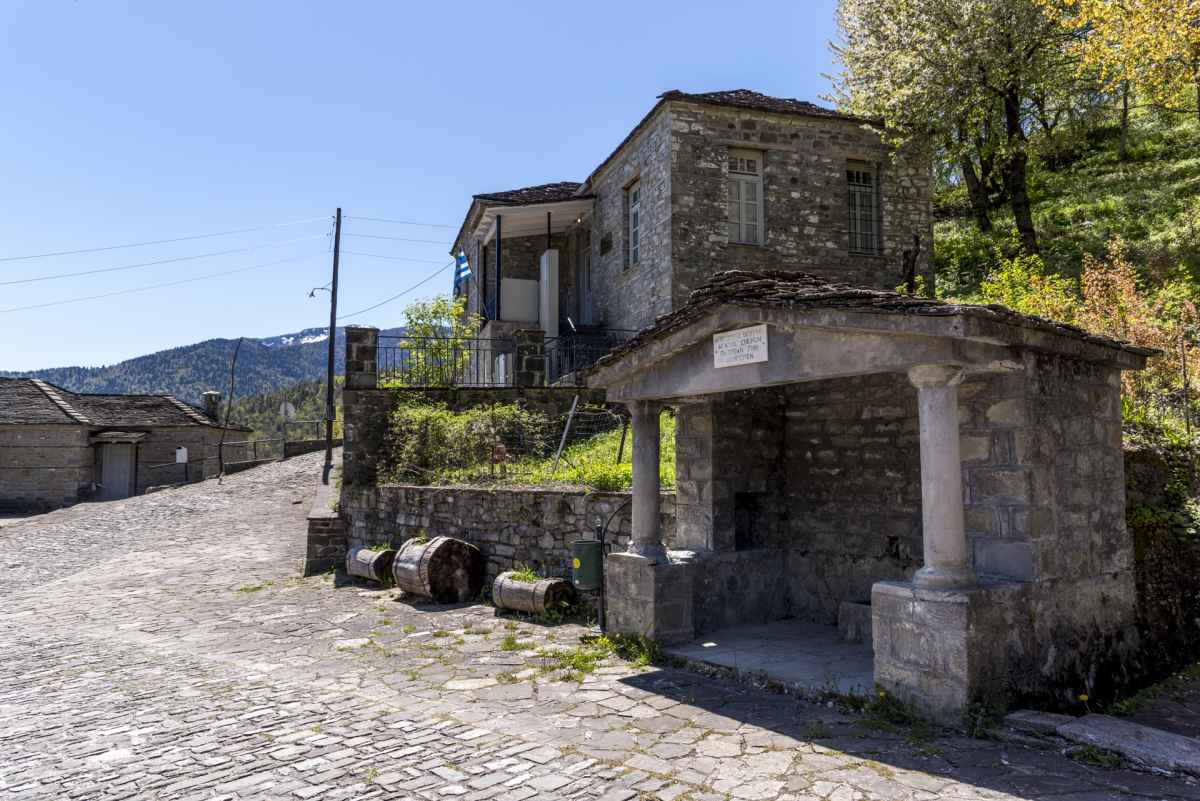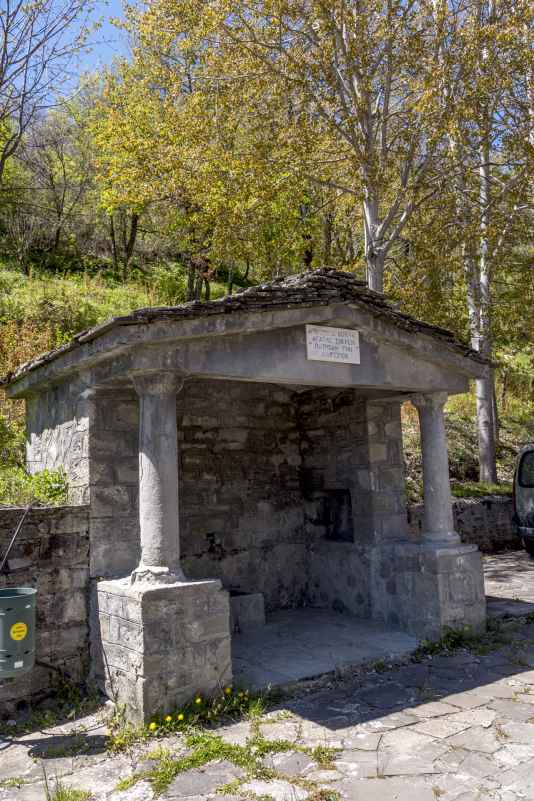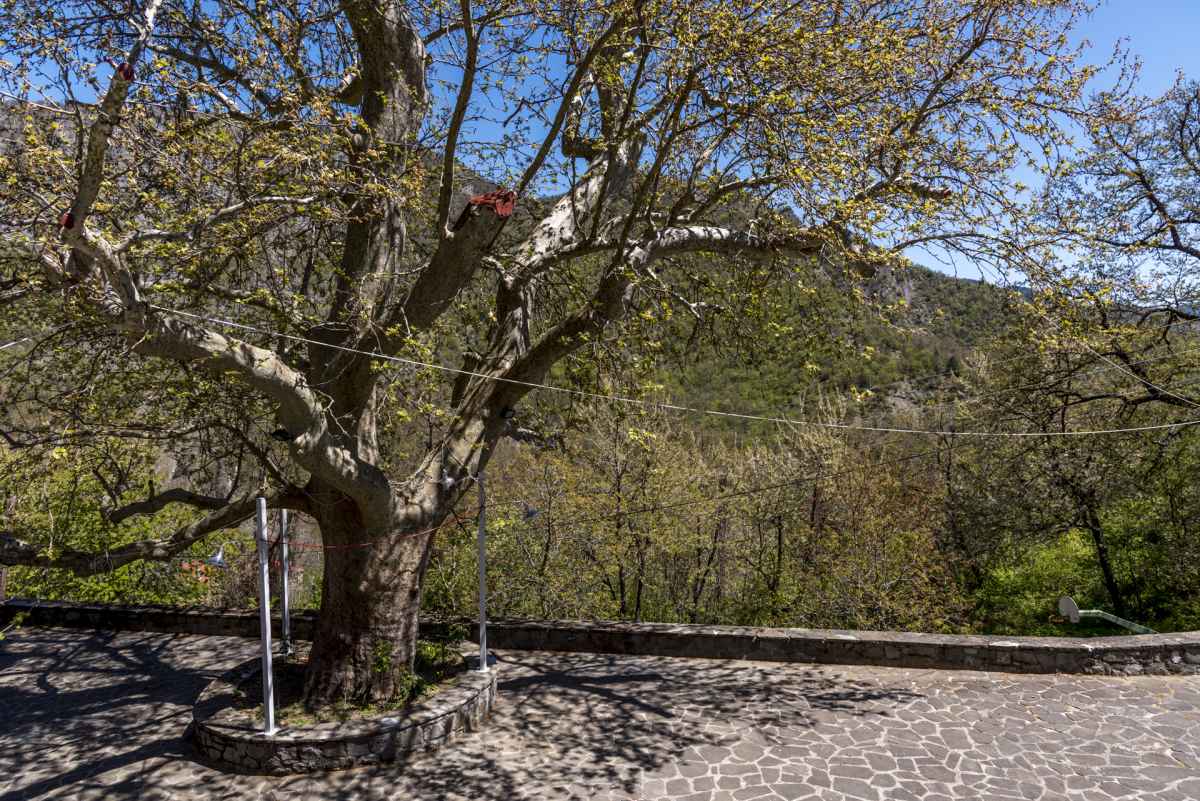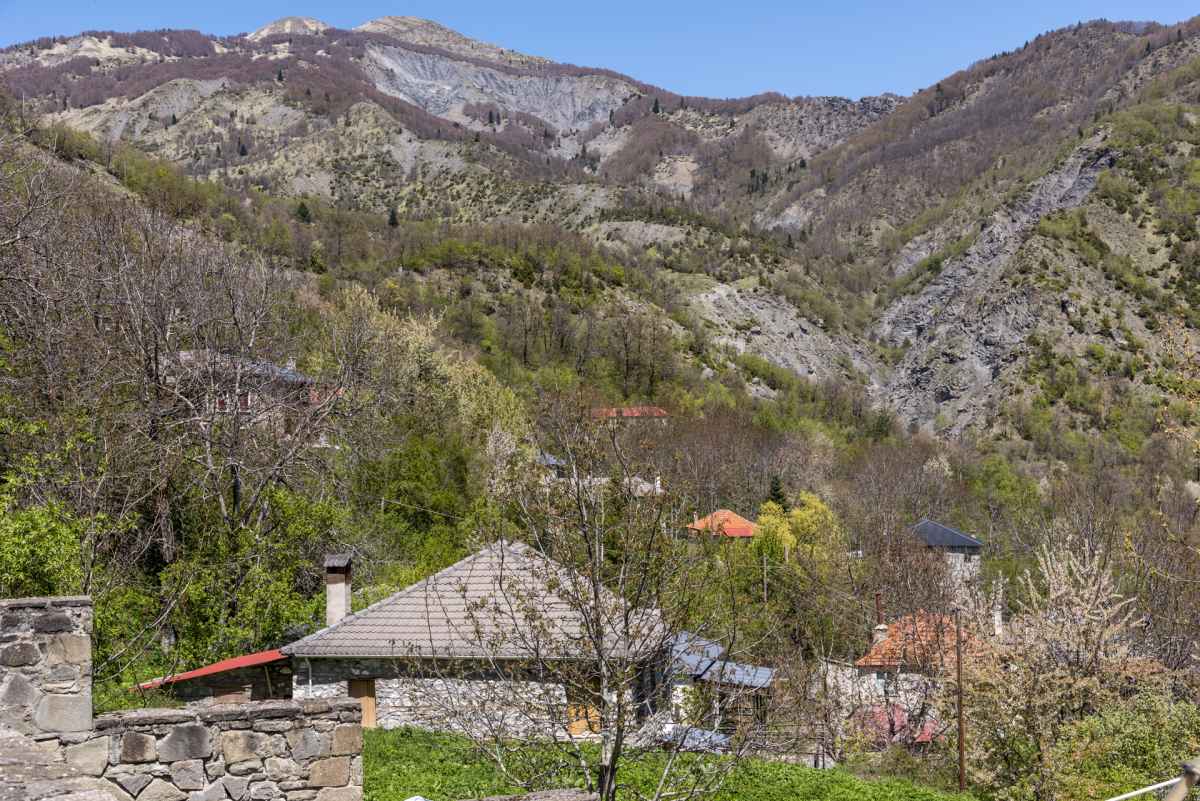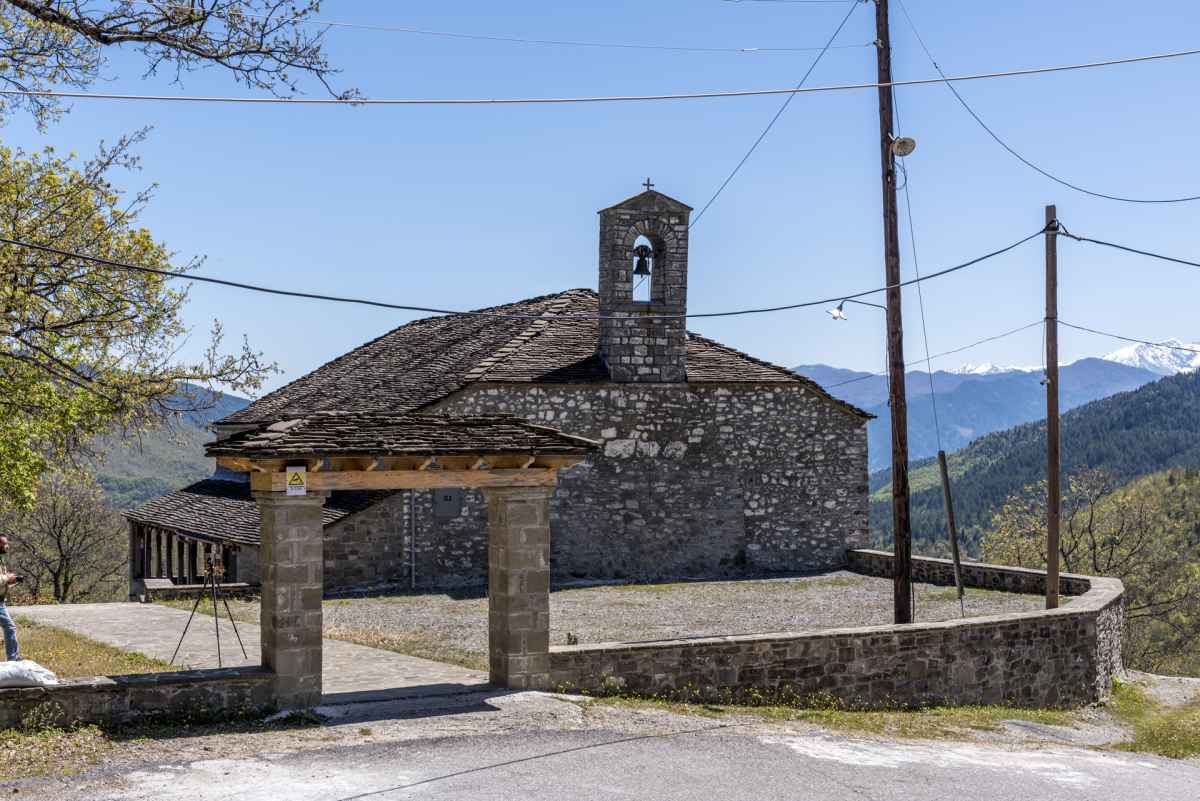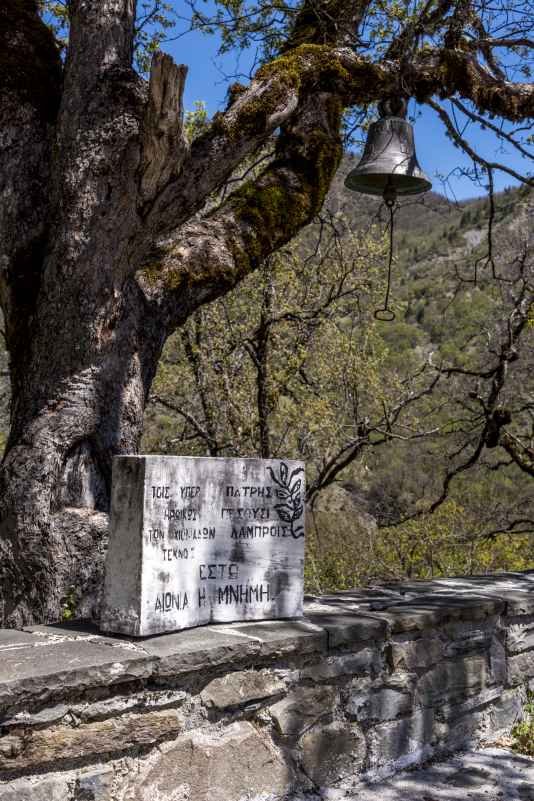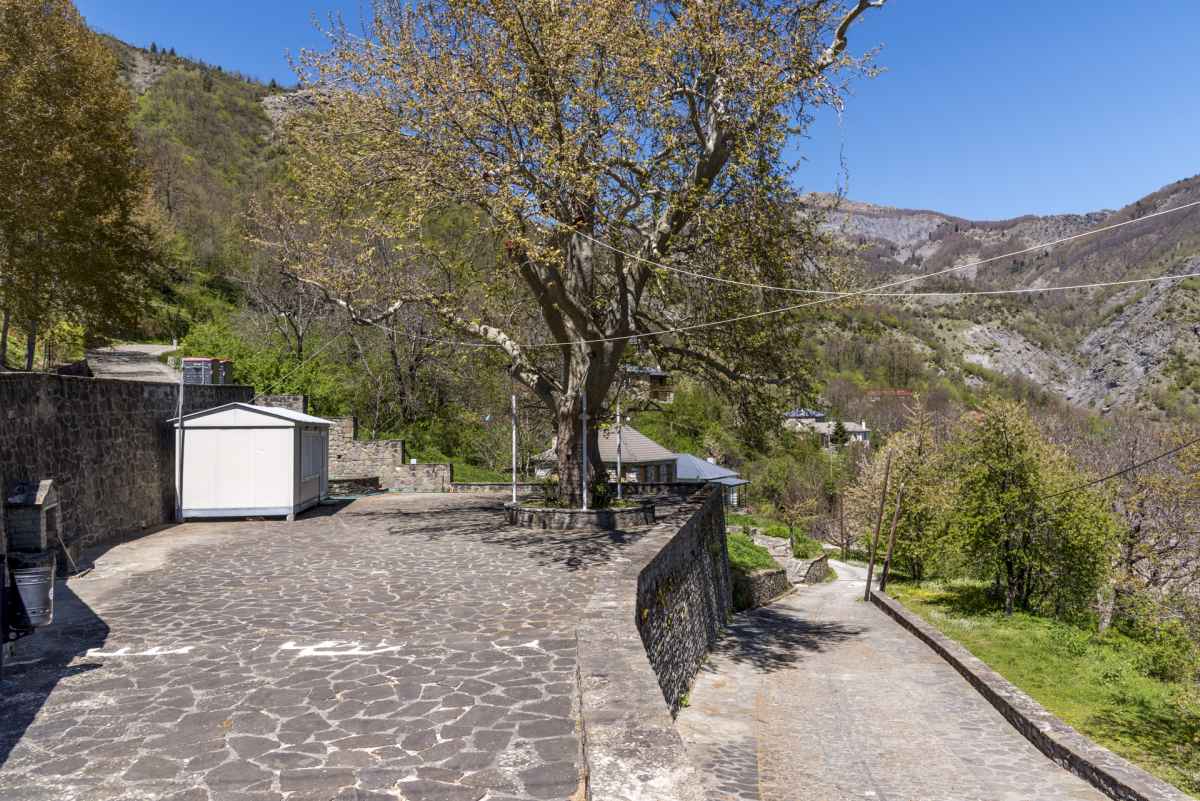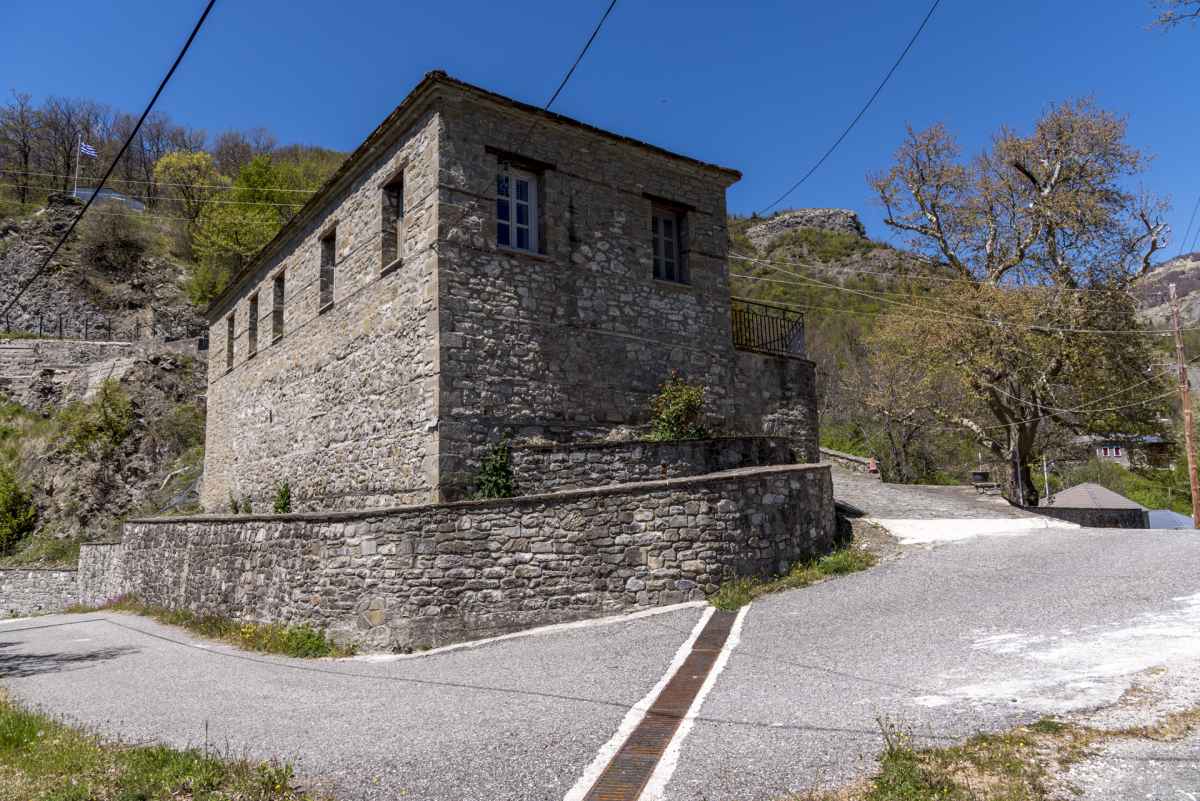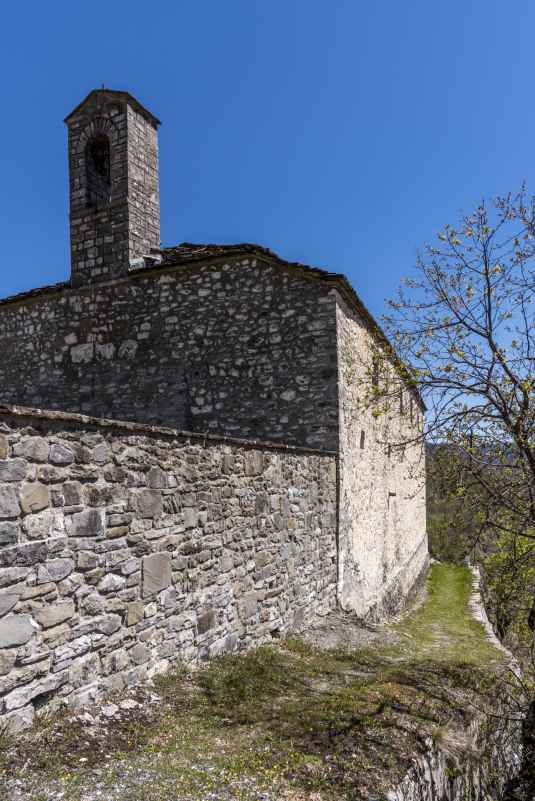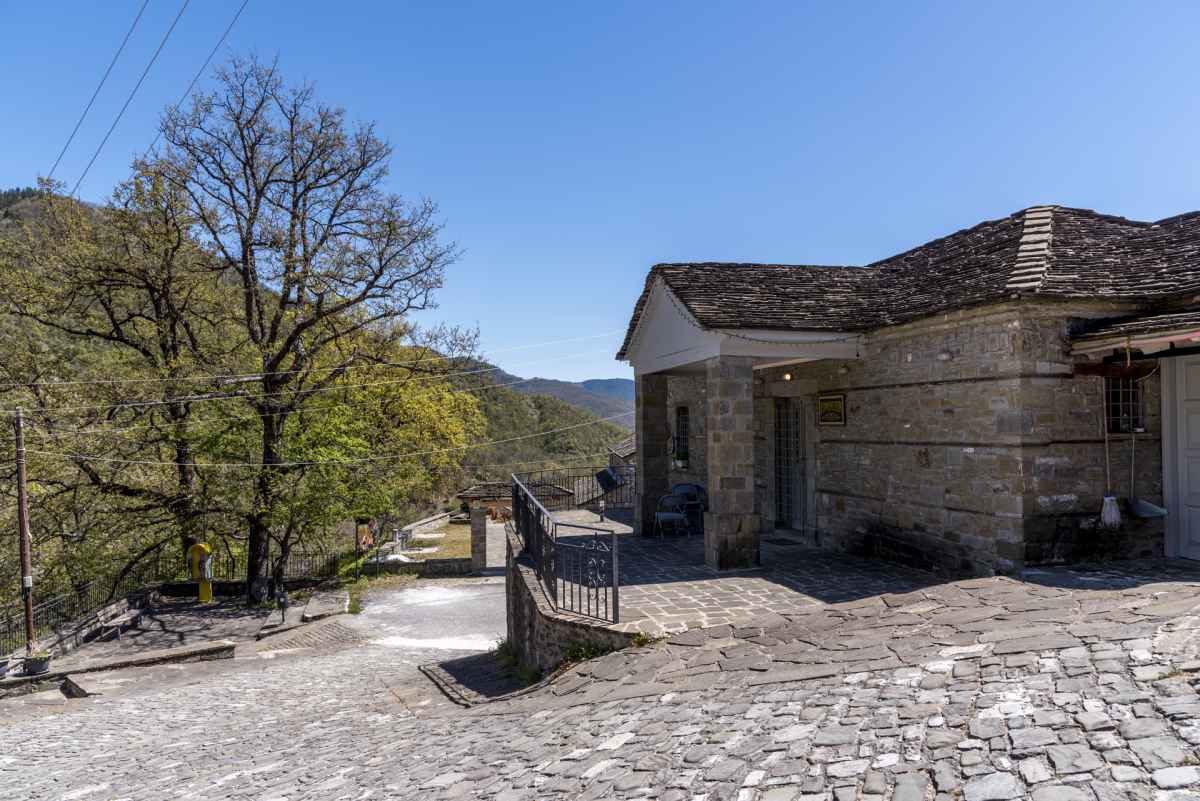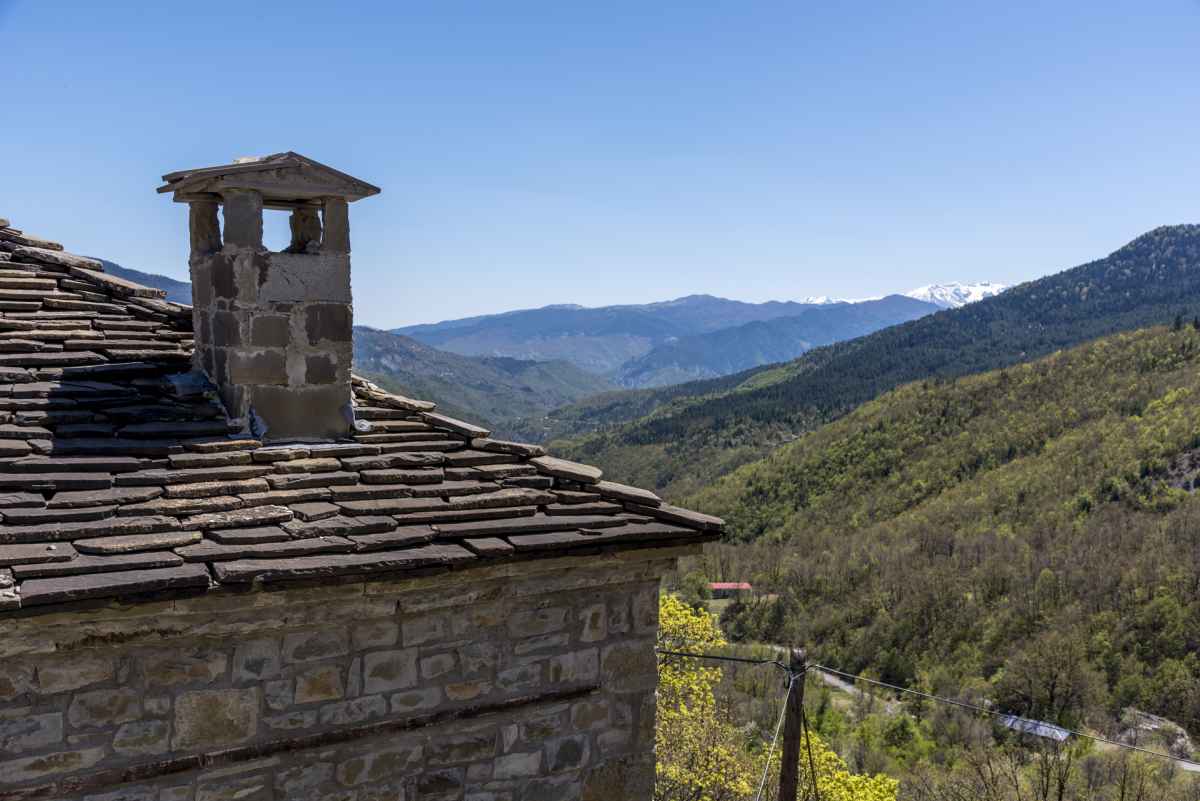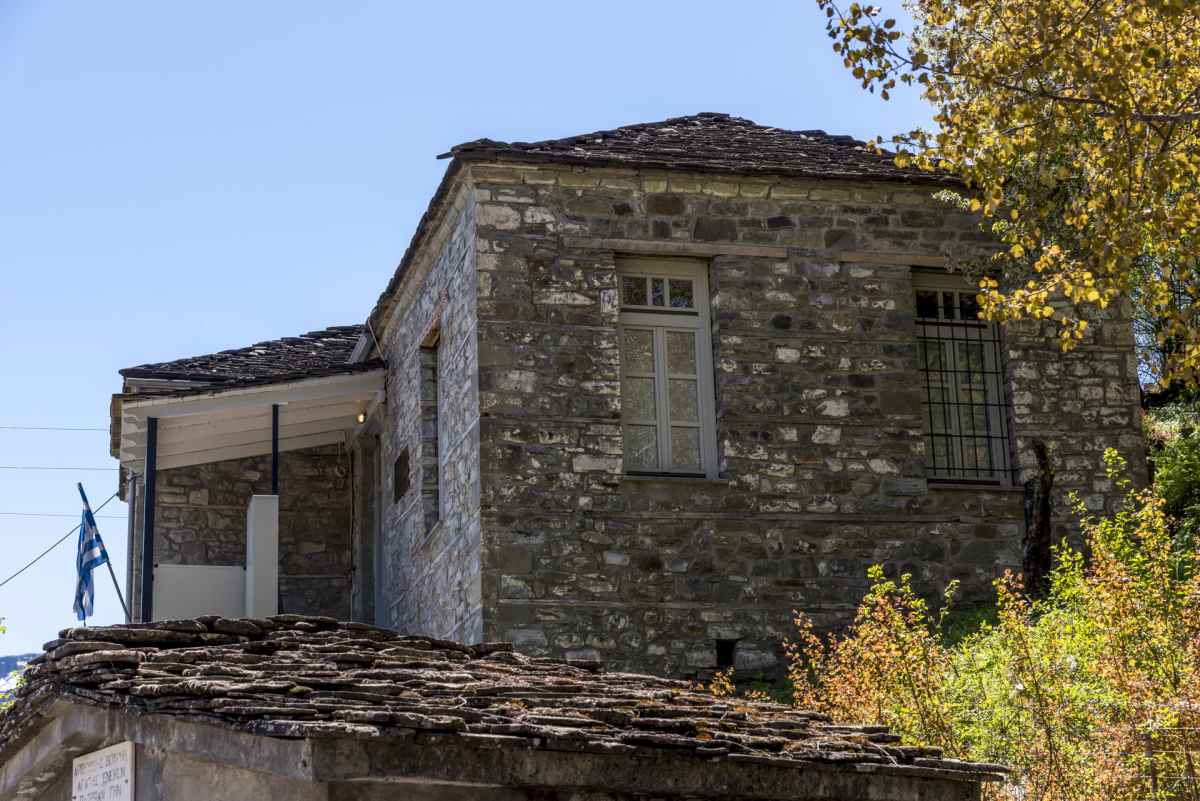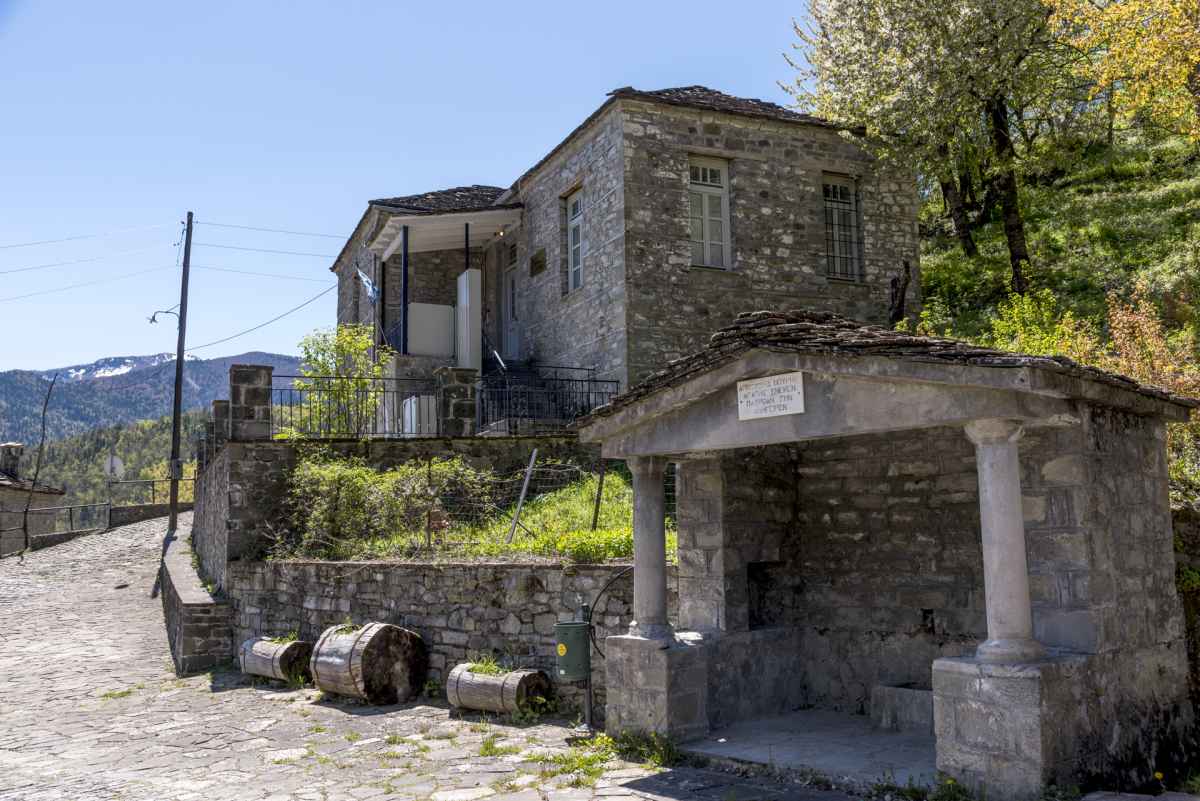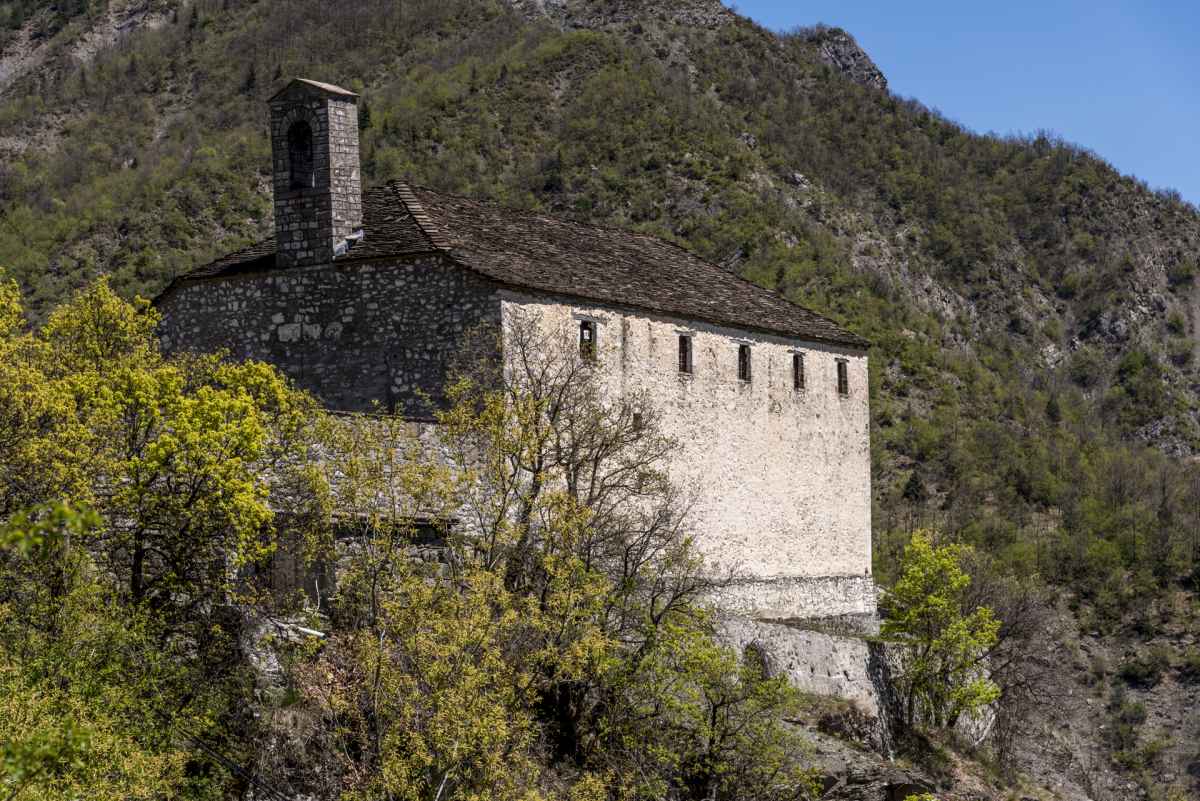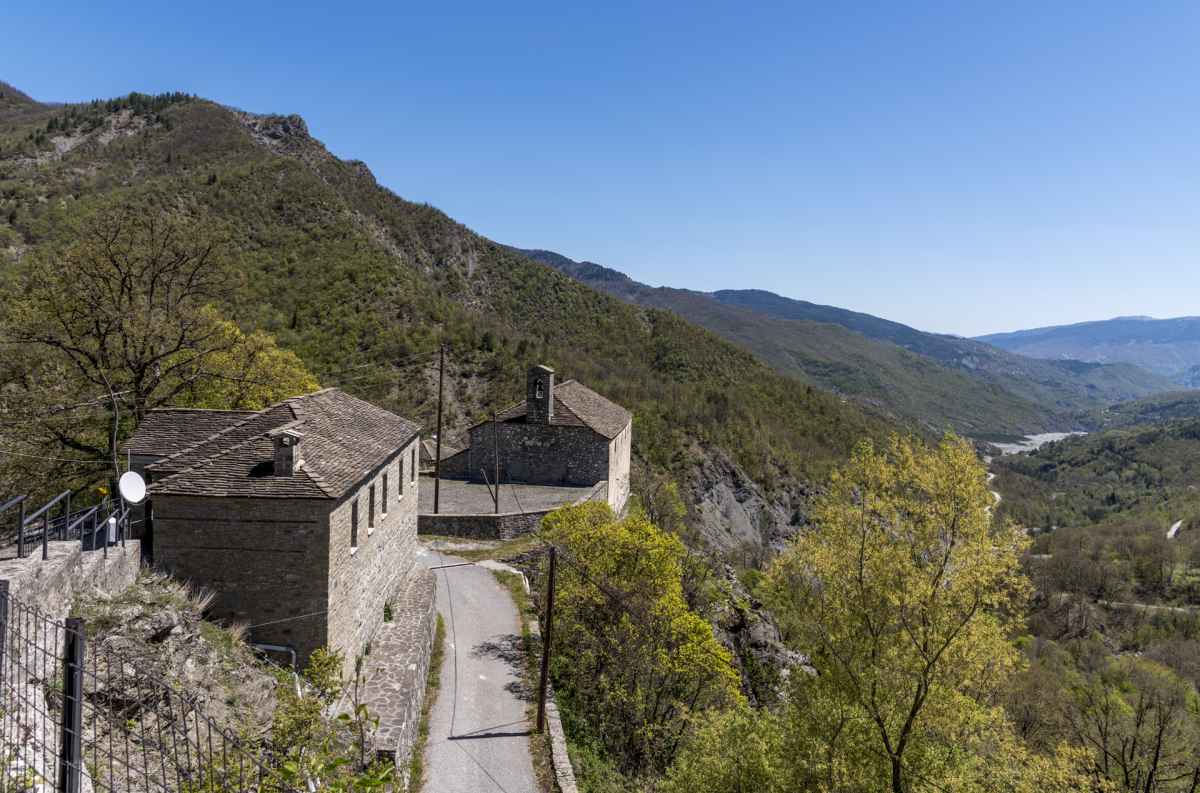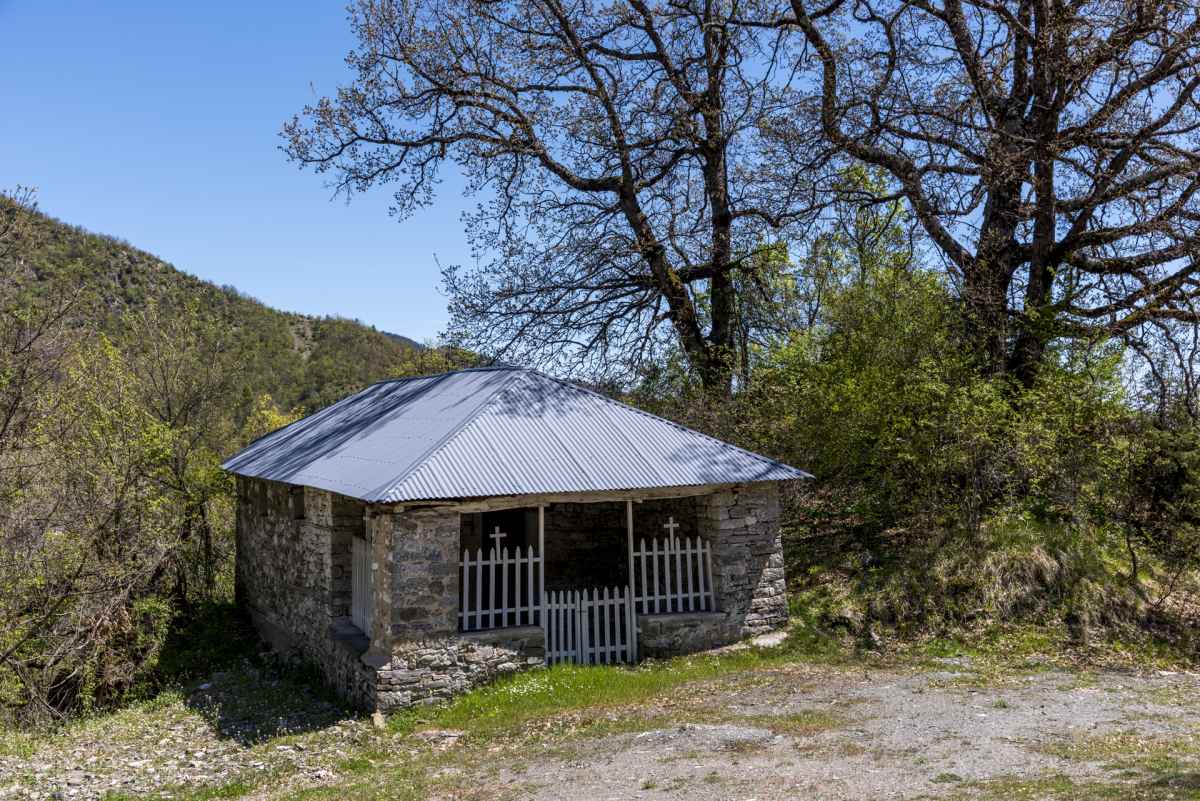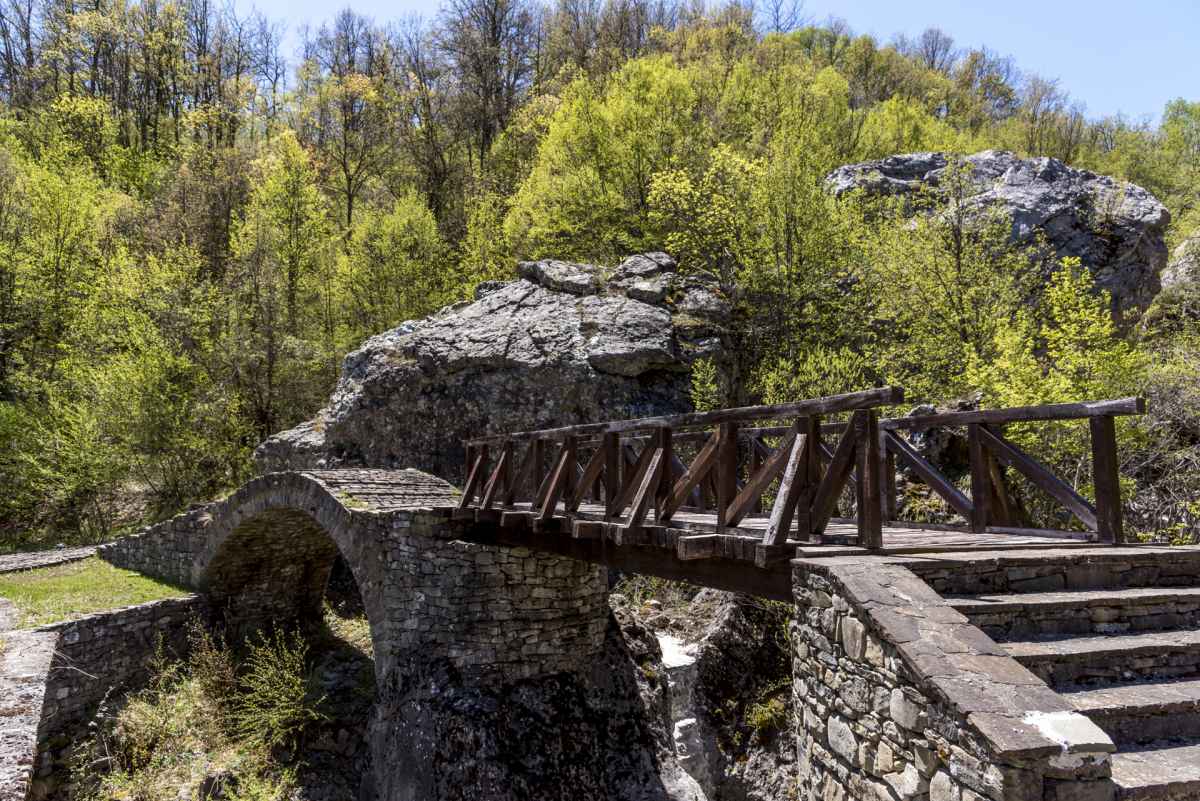Video
The village is built at an altitude of 1120m, on a densely forested oak and beech slope, at the eastern end of the peak of “Lesili” (1913m) on the border with Albania. It is 2 km from Asimochori village and 40.6 km from Konitsa. Before going up to the village, it is worth making a stop at the place “Paraspori”, on the newly repaired bridge, which was originally constructed by craftsmen of the nearby village of Pirsogianni and dates back to 1800.
The permanent residents are few and they are mainly retired. Walking around the village you will find several well-built old stone houses that have strong elements of the local architecture. In the picturesque square of the village, with the nice view to the valley of Gorgopotamos and the surrounding slopes of Grammos, is the church of Agios Athanasios (1866). It houses interesting portable icons of all periods of “Chionaditiki” painting.
A place of interest is the stone-built school (1905), which houses a café that operates only during the summer months and holidays. At the top of the square, next to the stone fountain, a large stone building (1911) is preserved. It houses the Museum of “Chioniadites” Painters.
Higher than the village, at an altitude of 1550m, is Profitis Ilias with a wonderful view of the whole area and a little further is the passage of Bandra. For centuries it was one of the main communication channels of the Greek villages of Grammos with those located in Albania. From there the Italians first invaded Greece on the first night of the Greek-Italian war in 1940.
Chioniades is known, more than anything else, for the famous painters, who traveled from their village to many parts of the Balkans and created a variety of elaborate ecclesiastical and folk paintings. It is admirable the fact of this great specialization of the men of the village in this particular art.
In total, the existence of at least 65 folk painters from Chioniades is mentioned. The period of their most intense activity is in the 18th and 19th century. Important works adorn temples and old mansions in the surrounding area (Konitsa, Zagori) and even further away. They were some of the few artists who at that time were also involved in ecclesiastical painting, hagiography (portable icons, iconostasis and murals) and folk-secular painting.
In Chioniades, on July 20, a traditional festival is held.

